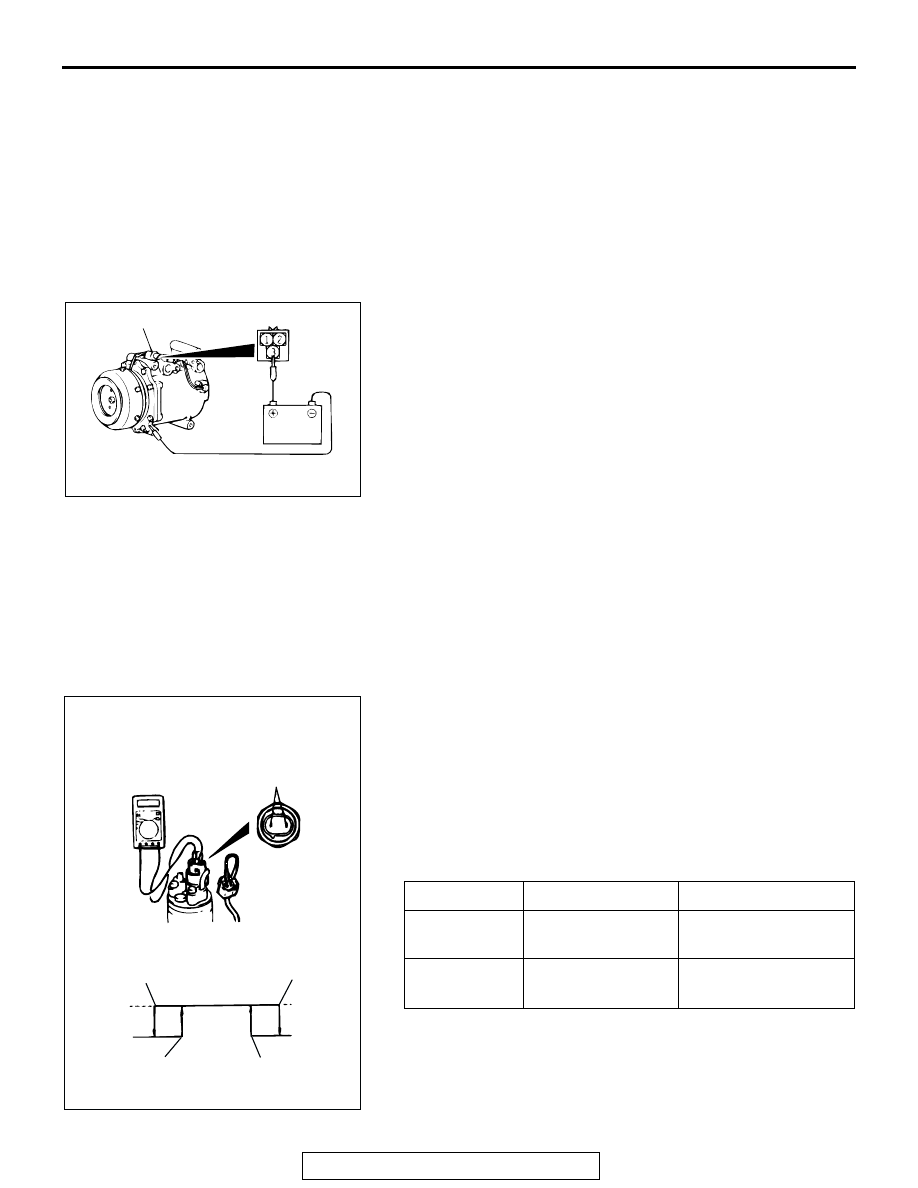Mitsubishi Montero Sport (2004+). Manual - part 600

ON-VEHICLE SERVICE
TSB Revision
HEATER, AIR CONDITIONING AND VENTILATION
55-27
ON-VEHICLE SERVICE
REFRIGERANT LEVEL TEST
M1552008400271
Use the refrigerant recovery station to remove all of the refrig-
erant, and then calculate the amount of the refrigerant and
charge it.
A/C COMPRESSOR CLUTCH TEST
M1552019900076
1. Disconnect the A/C compressor clutch connector to the A/C
compressor clutch.
2. Connect positive battery voltage directly to the connector for
the A/C compressor clutch.
3. If the A/C compressor clutch is normal, there will be a "click."
If the pulley and armature do not make contact ("click"),
there is a malfunction.
RECEIVER DRIER TEST
M1552008600220
Turn the A/C on. Check the temperature by touching the
receiver drier outlet and inlet pipes. If there is a difference in the
temperatures of the two pipes, the receiver assembly is
restricted. Replace the receiver assembly.
DUAL PRESSURE SWITCH CHECK
M1552010400364
1. Remove the dual pressure switch connector and connect
the high/low pressure side terminals located on the harness
side as shown in the illustration.
2. Install a gauge manifold to the high-pressure side service
valve of the refrigerant line. (Refer to
3. When the high/low pressure sides of the dual pressure
switch are at operation pressure (ON) and there is continuity
between the respective terminals, then the condition is
normal. If there is no continuity, replace the switch.
AC002842
A/C COMPRESSOR CLUTCH
CONNECTOR
AC
ITEM
FROM OFF TO ON FROM ON TO OFF
Low-pressure
side kPa (psi)
221
± 27 (32.1 ±
3.9)
196
± 20 (28.4 ± 2.9)
High-pressure
side kPa (psi)
2,354
± 200 (341.4
± 29)
2,942
± 200 (426.7 ±
29)
A003021
HIGH/LOW
PRESSURE SIDE
LOW-PRESSURE
SIDE
HIGH-PRESSURE
SIDE
ON
OFF
ON
OFF
AC
196 ± 20
(28.4 ± 2.9)
221 ± 27
(32.1 ± 3.9)
kPa (psi)
2942 ± 200
(426.7 ± 29)
2354 ± 200
(341.4 ± 29)